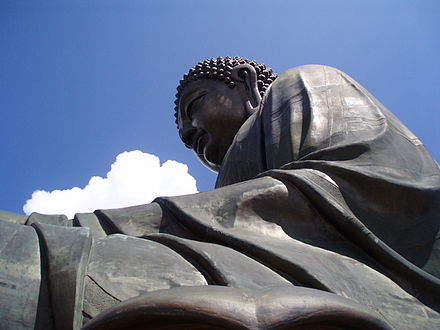
Lantau Island is the largest island in Hong Kong, located at the mouth of the Pearl River. Administratively, most of Lantau Island is part of the Islands District of Hong Kong. A small northeastern portion of the island is located in the Tsuen Wan District.

The Islands District is one of the 18 districts of Hong Kong. It is part of the New Territories. It had a population of 141,327 in 2011.
Hong Kong counts approximately 600 temples, shrines and monasteries. While Buddhism and Christianity are the most widely practiced religions, most religions are represented in the Special Administrative Region.

Mui Wo is a rural town on the eastern coast of Lantau Island in Hong Kong. The 2011 Census recorded 5,485 people living in Mui Wo and its environs.

The New Lantao Bus Company (1973) Limited, commonly known as New Lantao Bus or NLB, is a franchised bus company operating in Hong Kong. It mainly operates bus routes on Lantau Island.
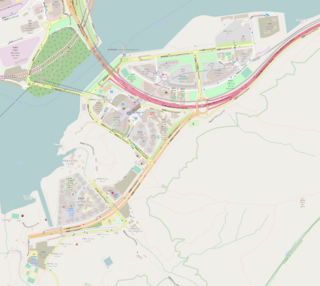
Tung Chung, meaning "eastern stream", is an area on the northwestern coast of Lantau Island, Hong Kong. One of the most recent new towns, it was formerly a rural fishing village beside Tung Chung Bay, and along the delta and lower courses of Tung Chung River and Ma Wan Chung in the north-western coast of Lantau Island. The area was once an important defence stronghold against pirates and foreign military during the Ming and the Qing dynasties.

Yuen Long is an MTR station in the north-eastern part of Yuen Long Town, New Territories, Hong Kong, on the West Rail Line between Kam Sheung Road and Long Ping. It is an interchange between the West Rail Line and Yuen Long Stop of the Light Rail system.

Tung Chung is a station on the Tung Chung Line of the MTR rapid transport system in Hong Kong. As the western end of the Tung Chung Line, it is also a transfer point of those wishing to use the Ngong Ping Cable Car. As with all other MTR stations, Tung Chung has a unique colour scheme used throughout the station, in this case lavender.

Po Lin Monastery is a Buddhist monastery, located on Ngong Ping Plateau, on Lantau Island, Hong Kong.

The Ngong Ping 360 is a gondola lift on Lantau Island in Hong Kong. Intended to improve tourism to the area, the aerial lift was previously known as Tung Chung Cable Car Project before acquiring the Ngong Ping 360 brand in April 2005. It consists of the Ngong Ping Cable Car, formerly known as the Ngong Ping 360 Skyrail, and the Ngong Ping Village, a retail and entertainment centre adjacent to the cable car's upper station. Ngong Ping 360 connects Tung Chung, on the north coast of Lantau and itself linked to central Hong Kong by the Tung Chung Line, with the Ngong Ping area in the hills above. This is home to the Po Lin Monastery and the Tian Tan Buddha, both already significant tourist attractions in their own right. Before Ngong Ping 360's opening, the only access was via a mountain road and bus service.

Ngong Ping is a highland in the western part of Lantau Island, Hong Kong. It hosts Po Lin Monastery and Tian Tan Buddha amidst the hills which is about 34 m tall. There are several hills nearby which are also an attraction to tourists. It is now the terminus of the cable car ride Ngong Ping 360 which travels to Tung Chung. New facilities and tourist attractions have opened including the Ngong Ping Village, Walking with the Buddha, the Monkey's Tale Theatre and Ngong Ping Tea House. A youth hostel is located near the monastery. The second highest peak of Hong Kong, Lantau Peak, is at its southeast.
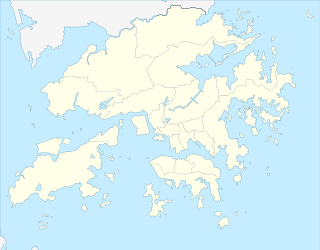
Nei Lak Shan is the sixth highest hill in Hong Kong. With a height of 751 m (2,464 ft) on Lantau Island, it is situated immediately north of Ngong Ping where the Buddhist Po Lin Monastery is located. Nei Lak, or prescriptively Mei Lak is a Cantonese language translation of Maitreya, the future Buddha, in Buddhism.
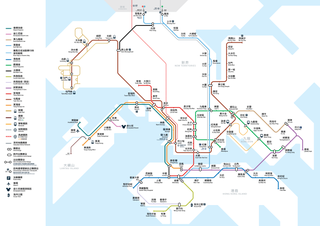
Several future projects on the MTR have been put forward by the MTR Corporation to the Hong Kong Government, with some already under construction.
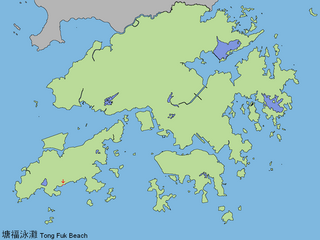
Tong Fuk is a village and an area on Lantau Island in Hong Kong. It is a popular place for holiday recreation. Tong Fuk Beach in a bay to the south of the village is a local attraction, where visitors rent village houses for leisure.
Articles related to Hong Kong include:

Buddhism is a major religion in Hong Kong and has been greatly influential in the traditional culture of its populace. Among the most prominent Buddhist temples in the city there are the Chi Lin Nunnery in Diamond Hill, built in the Tang Dynasty's architectural style; the Po Lin Monastery on Lantau Island, famous for the outdoor bronze statue, Tian Tan Buddha, which attracts a large number of visitors during the weekends and holidays.
Great Buddha, Big Buddha, or Giant Buddha may refer to:
YMCA of Hong Kong Christian College (YHKCC) was established in September 2003. It is the first directly subsidized international secondary school sponsored by YMCA since its establishment in 1901. It is located at 2 Chung Yat Street, Tung Chung, Hong Kong.

